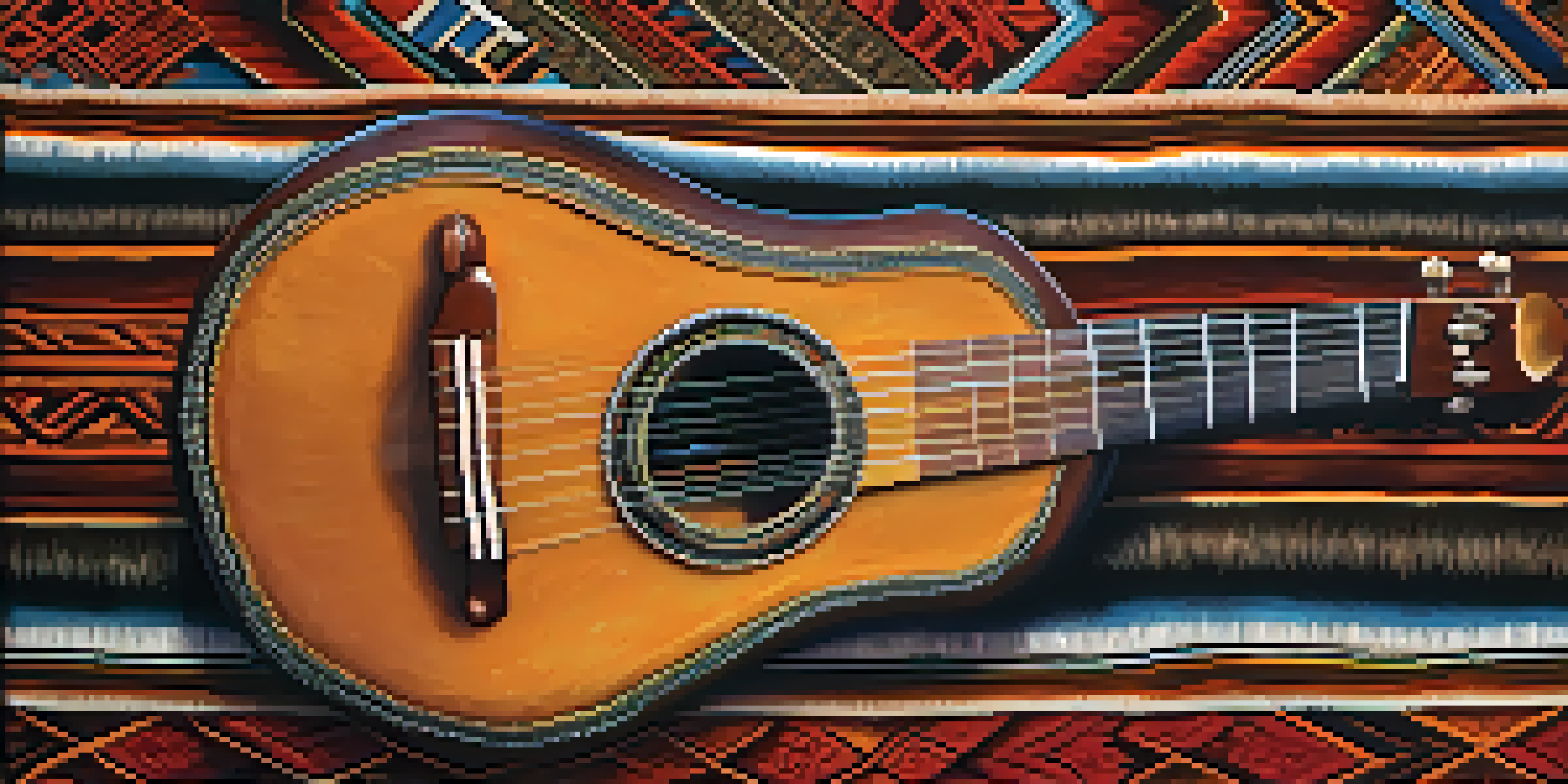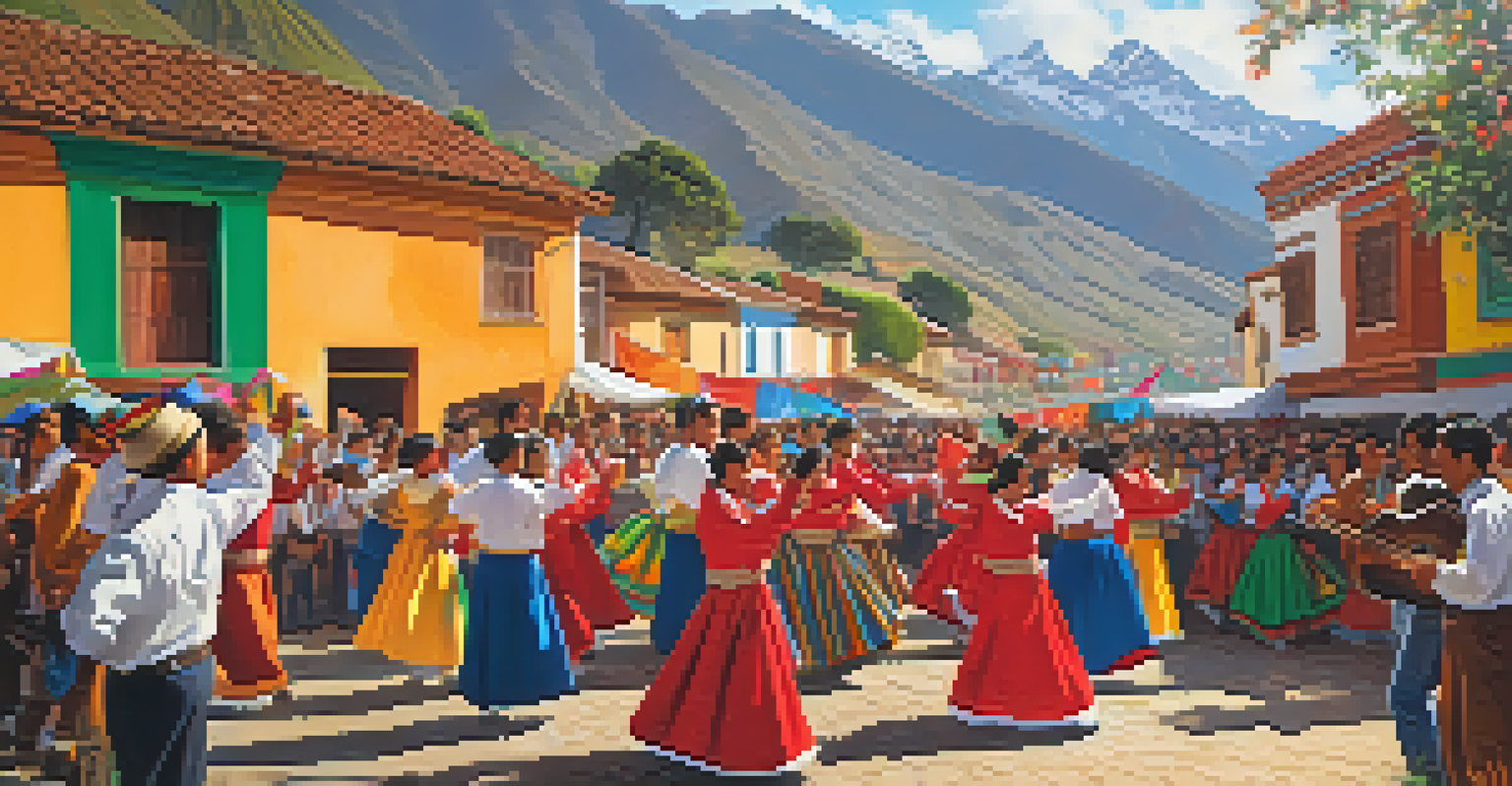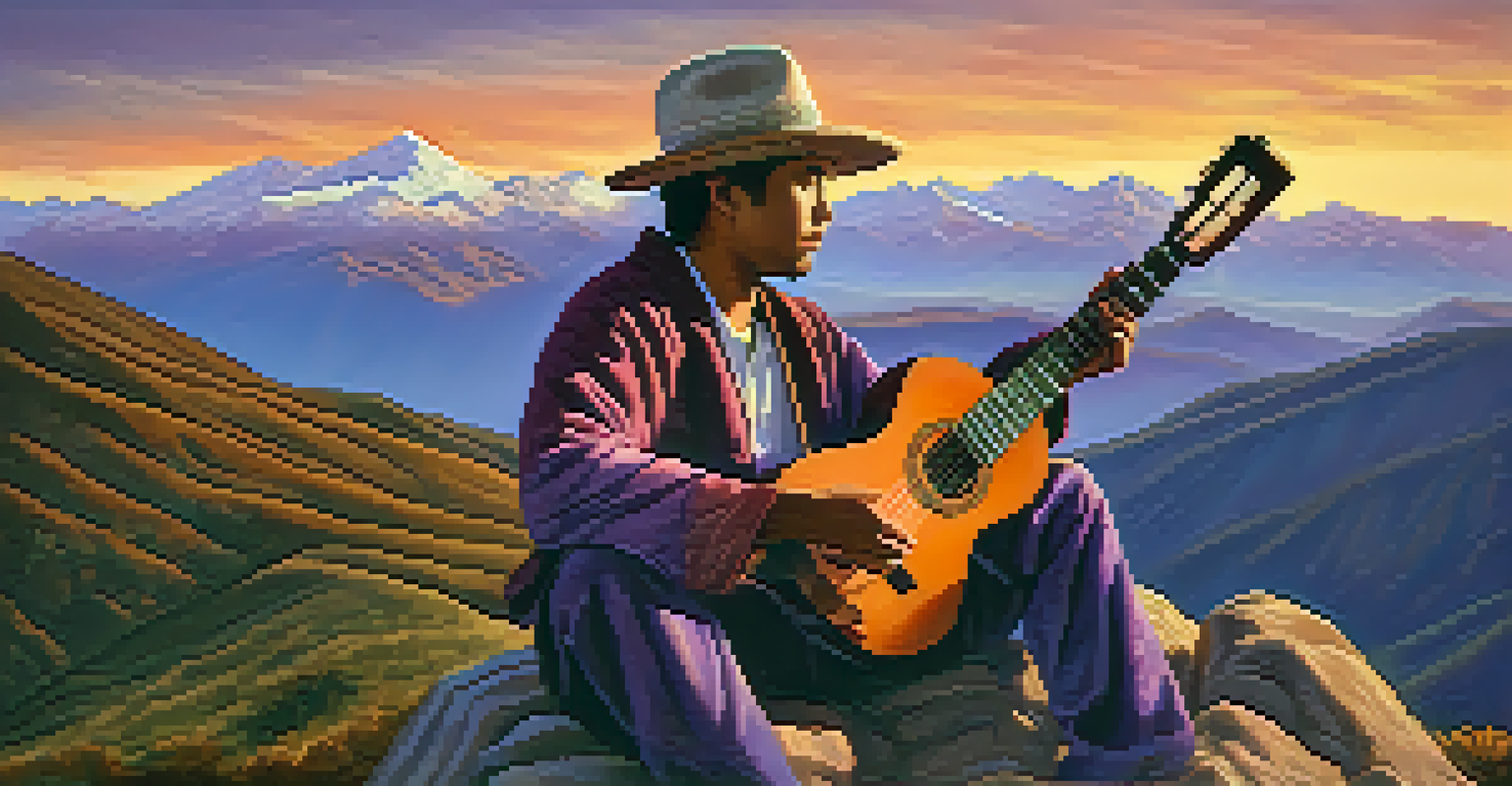The Significance of the Charango in Peruvian Music

The Charango: A Unique Instrument with Rich Heritage
The charango is a small stringed instrument that has become a symbol of Peruvian music. Traditionally made from the shell of an armadillo, it is distinctive in both sound and appearance. Its roots trace back to the indigenous cultures of the Andes, showcasing a blend of traditions that reflect the region's history.
Music is the shorthand of emotion.
This charming instrument often features ten strings, and its bright sound brings a lively spirit to various music genres. The charango is not just an instrument; it represents the cultural identity of the Andean people. It serves as a reminder of their resilience and creativity in the face of modernization.
In many ways, the charango embodies the essence of Peruvian music—diverse, vibrant, and deeply connected to the land. As we explore its significance, we uncover a story that goes beyond mere sound, revealing layers of cultural expression and community.
The Role of the Charango in Traditional Andean Music
In traditional Andean music, the charango plays a pivotal role in creating a distinctive soundscape. It is often accompanied by other instruments, such as the pan flute and the bombo, weaving a rich tapestry of melodies and rhythms. The interplay between these instruments highlights the charango's ability to complement and enhance the overall musical experience.

Songs performed with the charango often tell stories of everyday life, nature, and cultural rites, making it an integral part of community gatherings. These performances serve not only as entertainment but also as a means of preserving history and passing down traditions from one generation to the next. Thus, the charango becomes a storytelling device, bridging the past and present.
Charango: Symbol of Peruvian Culture
The charango embodies the cultural identity of the Andean people, reflecting their history and resilience.
The unique tonal qualities of the charango allow it to stand out even among a group of instruments. Its bright and cheerful sound can instantly uplift the mood, making it a favorite during celebrations and festivals. This joyous music often resonates deep within the hearts of those who hear it, solidifying the charango's place in the cultural fabric of Peru.
The Charango's Evolution Through Modern Music
While the charango has deep roots in traditional music, it has also evolved significantly in contemporary contexts. Modern musicians have embraced the charango, incorporating it into various genres such as folk, rock, and even jazz. This fusion highlights the instrument's versatility and ability to adapt to changing musical landscapes.
The beauty of music is that it transcends language and culture.
Artists today often experiment with the charango, using it as a lead instrument or as part of a larger ensemble. This innovation not only keeps the charango relevant but also attracts new audiences who may not be familiar with its traditional sounds. By blending old and new, these musicians create a fresh dialogue between past and present.
The charango's evolution reflects the dynamic nature of Peruvian music itself. As cultural exchange continues to shape the music scene, the charango remains a beloved icon that bridges generations and styles, ensuring its legacy for years to come.
Cultural Significance of the Charango in Peruvian Society
The charango is more than just a musical instrument; it represents a sense of identity for many Peruvians. It is often associated with the Andean way of life, symbolizing connection to the land and heritage. In various communities, playing the charango is a rite of passage, deeply embedded in social and cultural traditions.
During festivals and celebrations, the charango plays a central role, bringing people together through music and dance. These gatherings foster a sense of belonging and community, reinforcing the importance of cultural transmission. In this way, the charango acts as a vessel for collective memory and shared experiences.
Charango's Role in Music and Storytelling
This instrument plays a pivotal role in traditional Andean music, serving as a storytelling device that connects generations.
Moreover, the charango serves as a source of pride for many Peruvians. As artists and musicians showcase their skills, they not only honor their heritage but also contribute to a broader appreciation of Andean culture on the global stage. This cultural pride elevates the charango from a mere instrument to a symbol of resilience and unity.
The Charango: A Tool for Education and Preservation
The charango is increasingly recognized for its educational value in teaching about Andean culture and music. Schools and community programs have integrated charango lessons into their curricula, providing students with hands-on experience in both music and cultural history. This educational approach is crucial for preserving the charango's legacy.
By learning to play the charango, young people connect with their roots and gain a deeper understanding of their cultural identity. These lessons often include storytelling elements, allowing students to appreciate the narratives that accompany the music. Such immersive experiences foster a sense of pride and continuity within communities.
Additionally, workshops and community events often feature charango performances, encouraging intergenerational dialogue. Elders share their knowledge and skills, ensuring that the art of charango playing is passed down effectively. This commitment to education and preservation enriches communities and keeps the charango's spirit alive.
The Global Influence of the Charango
The charango's influence extends beyond Peru, captivating musicians and audiences worldwide. As global interest in world music grows, the charango has found its way into various musical genres across continents. This cross-cultural exchange highlights the universal appeal of the charango's intriguing sound.
Musicians from different backgrounds often collaborate with charango players, blending traditional Andean melodies with their own musical styles. Such collaborations not only broaden the charango's reach but also create innovative sounds that resonate with diverse audiences. This fusion of cultures enriches the global music landscape.
Global Influence and Evolution
The charango has evolved into various musical genres worldwide, showcasing its versatility and fostering cultural exchange.
Moreover, the charango has become a symbol of cultural exchange and appreciation. As it travels beyond its Andean origins, it invites listeners to explore the stories and traditions embedded within its music. This global journey not only elevates the charango but also fosters a deeper understanding of Peruvian culture.
Conclusion: The Charango's Lasting Legacy
As we conclude our exploration of the charango, its significance in Peruvian music becomes abundantly clear. It is not merely an instrument, but a powerful symbol of cultural identity, resilience, and creativity. The charango's ability to evolve while maintaining its roots speaks to the heart of Andean music.
The ongoing efforts to preserve and promote the charango in both traditional and modern contexts ensure its legacy for future generations. Whether through education, community gatherings, or global collaborations, the charango continues to resonate with audiences around the world. It serves as a reminder of the importance of music in connecting people and preserving cultural heritage.

Ultimately, the charango stands as a testament to the richness of Peruvian culture. Its vibrant sound and deep historical significance invite us all to join in a celebration of music that transcends borders and unites us through shared stories and experiences.